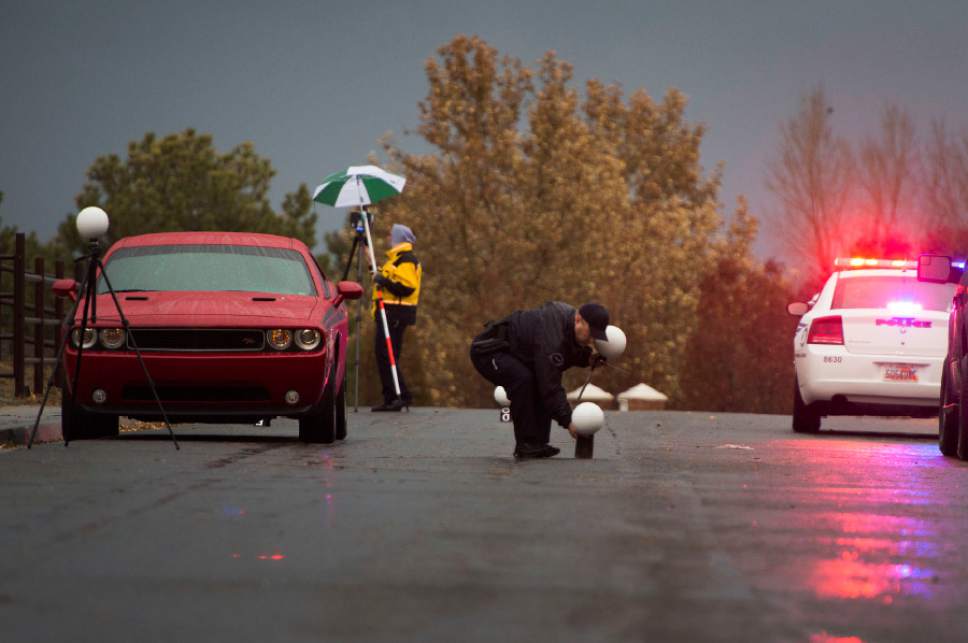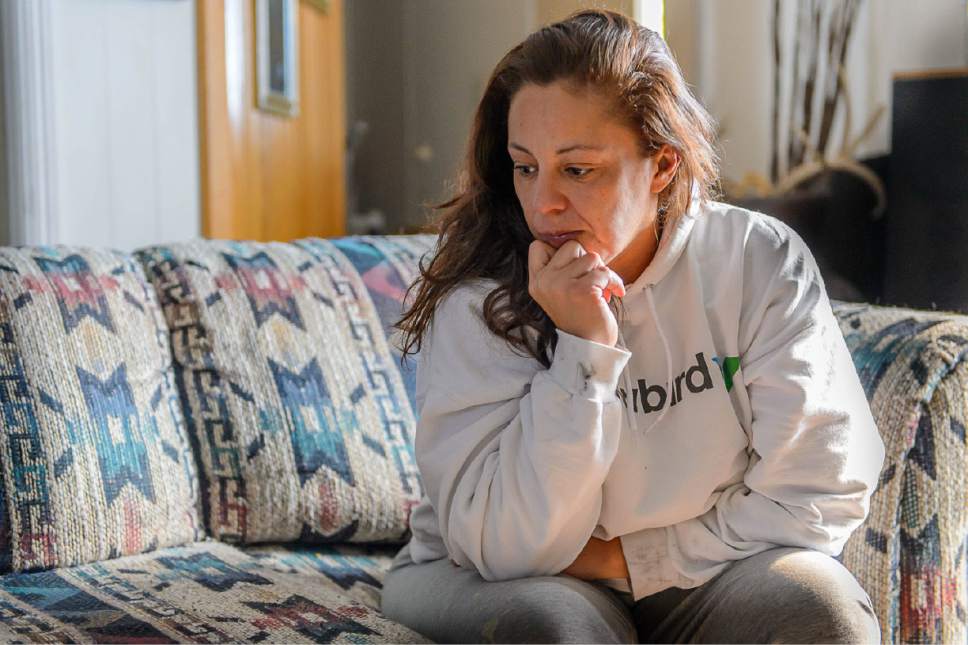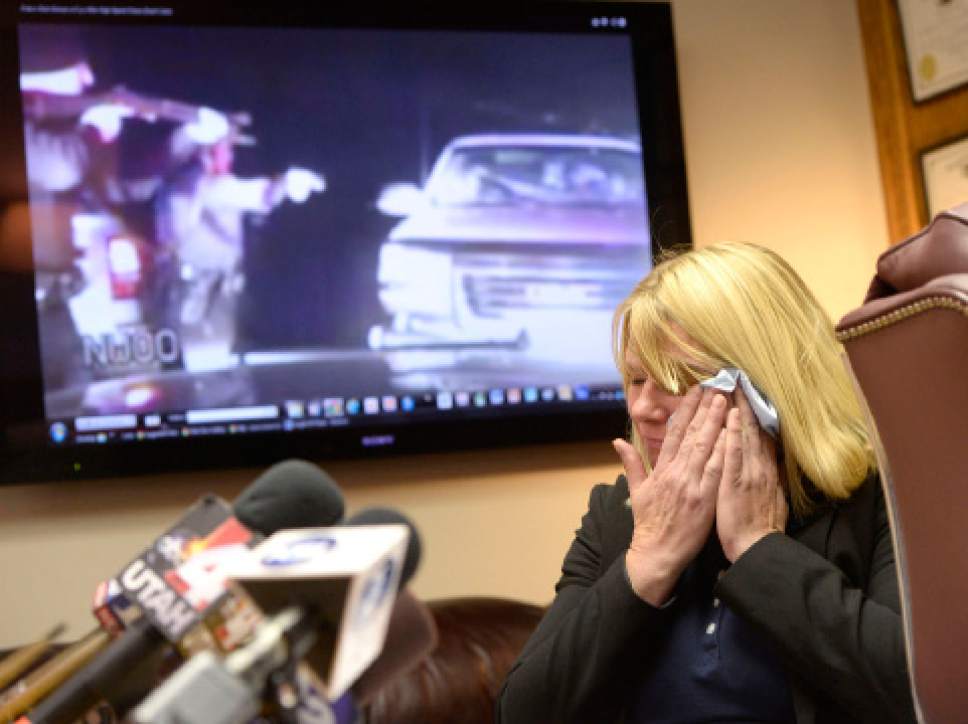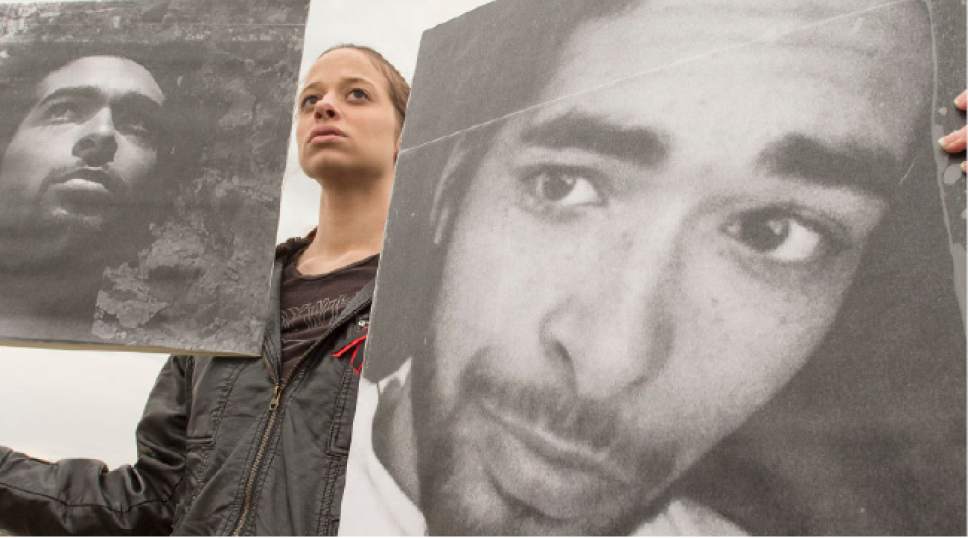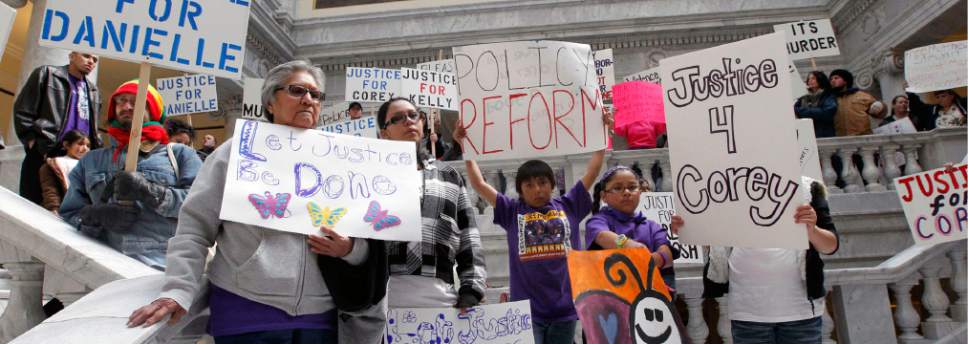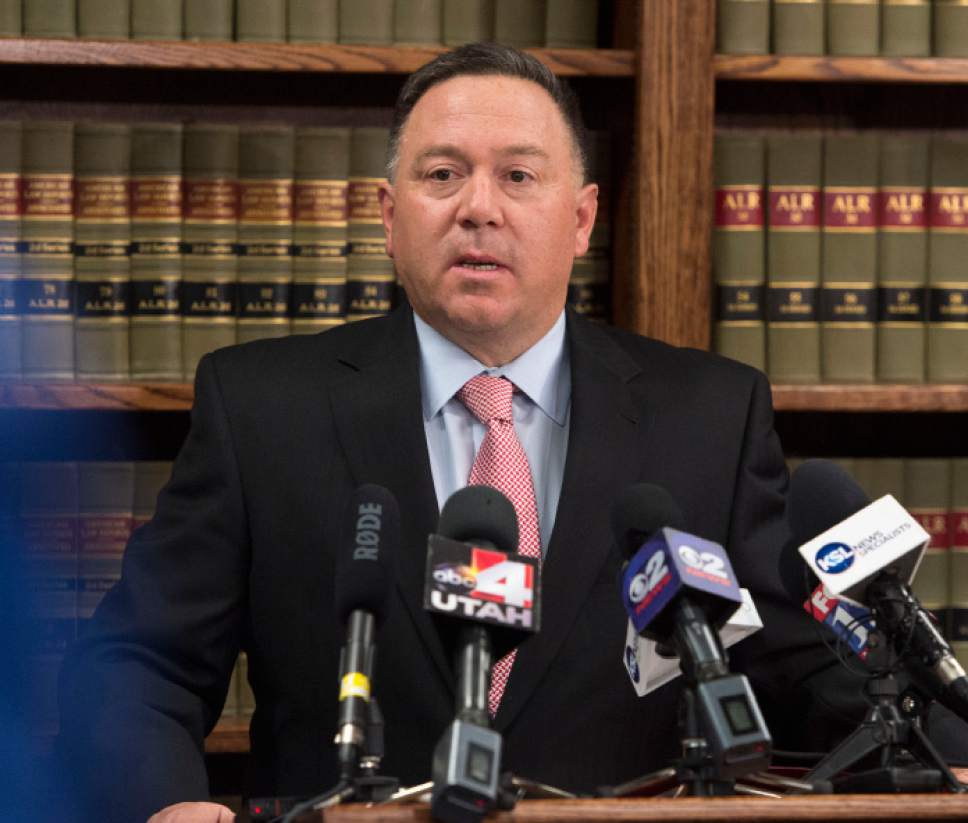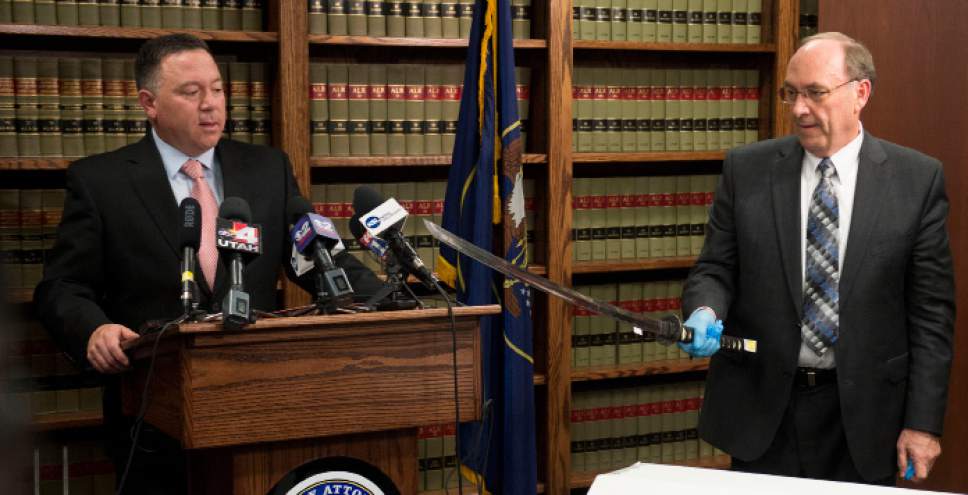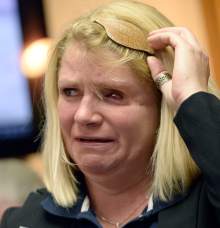This is an archived article that was published on sltrib.com in 2014, and information in the article may be outdated. It is provided only for personal research purposes and may not be reprinted.
In the past five years, more Utahns have been killed by police than by gang members.
Or drug dealers. Or from child abuse.
And so far this year, deadly force by police has claimed more lives — 13, including a Saturday shooting in South Jordan — than has violence between spouses and dating partners.
As the tally of fatal police shootings rises, law enforcement watchdogs say it is time to treat deadly force as a potentially serious public safety problem.
"The numbers reflect that there could be an issue, and it's going to take a deeper understanding of these shootings," said Chris Gebhardt, a former police lieutenant and sergeant who served in Washington, D.C., and in Utah, including six years on SWAT teams and several training duties. "It definitely can't be written off as citizen groups being upset with law enforcement."
Through October, 45 people had been killed by law enforcement officers in Utah since 2010, accounting for 15 percent of all homicides during that period.
A Salt Lake Tribune review of nearly 300 homicides, using media reports, state crime statistics, medical-examiner records and court records, shows that use of force by police is the second-most common circumstance under which Utahns kill each other, surpassed only by intimate partner violence.
Saturday's shooting, which occurred after an officer responded to a trespassing call, remains under investigation.
Nearly all of the fatal shootings by police have been deemed by county prosecutors to be justified. Only one — the 2012 shooting of Danielle Willard by West Valley City police — was deemed unjustified, and the subsequent criminal charge was thrown out last month by a judge.
Does that mean such deaths should be treated as the inevitable cost of keeping police and the public safe?
"Police are trained and expected to react to deadly threats. As many deadly threats emerge is the exact amount of times police will respond," wrote Ian Adams, a West Jordan police officer and spokesman for the Utah Fraternal Order of Police. "The onus is on the person being arrested to stop trying to assault and kill police officers and the innocent public. … Why do some in society continue to insist the problem lies with police officers?"
But Robert Wadman, a criminal justice professor at Weber State University and former chief of the Omaha, Neb., police department, said the factors leading up to the decision to shoot a subject are more subtle than what prosecutors consider when reviewing the legal justification. Under Utah law, an officer is justified if at the moment of the shooting the officer reasonably believes deadly force is necessary to prevent death or serious injury.
"Sometimes the line between is it legal and is it necessary becomes difficult to distinguish," Wadman said. "In the judgment of the officer, 'Is my life in jeopardy? Yes.' At that point in time, they're legally grounded in using deadly force. But the question is, is it necessary? That's something that needs to be firmly addressed, for example, in training."
—
'Officers may use any force available'
The Peace Officer Standards and Training (POST) division of the Utah Department of Safety oversees, directly or indirectly, the basic training of all police recruits in Utah. At its four-month academy, cadets are introduced to the use-of-force continuum, a diagram showing officer force options — simply showing up at the scene; verbal commands, touching or holding a subject, pepper spray, police dogs, baton, Taser, or deadly force — arrayed in a circle for the officer's selection.
"Officers may use any force available provided they can justify the reasonableness of force used," the manual states.
Adams maintains that officers in Utah typically use less force than may be justified.
"In the vast majority of cases where lethal force was a possibility, the suspect was successfully arrested without the use of lethal force," Adam said. "Of course, these cases do not garner much attention from the press, politicians, or the public."
He pointed to FBI data showing Utah officers make about 125,000 arrests per year, versus an average of nine fatal shootings by police.
"Those incidents where police were forced to take [deadly] action represent the truly abnormal," Adams said.
Rare or not, Gebhardt said, each shooting demands a high level of scrutiny because the impact is so high.
"There is an absolute time when you need to go hands on, need to Taser them, need to resort to deadly force," Gebhardt said. "But there are really less times than what's going on. There's an opportunity to de-escalate more of these situations. Officers instead are escalating these situations themselves."
Such cases are known as "police-created urgencies," said Brian Buchner, president of the National Association for Civilian Oversight of Law Enforcement (NACOLE).
"[It's] where force may be legally justified for an officer, who, but for their bad decisions and bad tactics, wouldn't be in that position to begin with. There may be issues involving the officers' decision-making that are worth noting and may be problematic," Buchner said.
Scott Stephenson, director of POST, said cadets receive formal training in de-escalation, including a 12-hour class on conflict resolution, eight hours on mental illness response and a session on dealing with subjects with "excited delirium" from drug use.
"We teach officers to use lower levels of force, if at all possible," Stephenson said.
But that coursework gives way to continuing training that focuses almost exclusively on using force, Gebhardt said.
"When they receive the verbal Judo class, it's one time, done and over with," Gebhardt said. "Baton training, OC spray, firearms are done on a quarterly, annual, or two-year basis. They should integrate that de-escalation training into it. When a situation deteriorates, the officer reverts to their training. … Departments really need to own, from the top down, de-escalation. They need to stress and emphasize de-escalation with the officers."
Stephenson countered that officers are highly motivated to de-escalate where possible.
"No officer wants to take somebody's life. No officer wants to be involved in that situation," Stephenson said. "Everyone dreads it. But it could happen in any moment in their shift. That alone creates stress when you come in contact with the public."
—
'This cycle has got to be broken'
But that stress may be out of proportion to the actual risk posed by the public — and a catalyst for use of force, Wadman said.
"It's my concern, both as a former police chief and an instructor, that we've lost touch with the communities that we serve," Wadman said. "If they're in their cars, going from call to call with their windows rolled up, it's a much more fearful situation than if they are in the communities. This cycle has got to be broken, where police are becoming more and more afraid of the communities they serve. When you work closely with people, you don't have that."
Adams said police can't know when they'll be assaulted. Although Utah has one of the nation's lowest violent crime rates, the five most recent years of FBI data show there are about 630 assaults annually on officers in Utah, making the state's assault-per-officer rate the 10th highest in the country.
"Utah does not have a police force problem, it has a violent criminal problem," said Adams, who this summer shot and wounded a man who pointed a fake gun at him during a foot chase. "Is it too much to ask that society support officers who are violently attacked? Is it too much to ask that an officer, after sacrificing his mental and physical health for the community, can expect that the community then gather round and support him during one of the most devastating moments of his life?"
Scrutiny is the only way for police to learn from their most tragic encounters, Gebhardt said.
"Law enforcement gets very upset with Monday morning quarterbacking," he said. "They shouldn't. They should be embracing these events, debriefing these events. 'What can we do better? What can we train on that needs to be a component of every use of force scenario?' "
Accountability also is critical for continued cooperation with the public, Wadman said.
"Police organizations should be in a posture where they're doing everything they can to have a quality working relationship with the community, so there's no question in a community's mind that the officer's actions were in line with the law and necessary."
—
'We have people who really want to see the truth'
In most Utah police agencies, a shooting is investigated by county prosecutors to find whether it was legally justified, and also by the agency itself to determine whether the officer's actions complied with department policies.
That exposes investigations to conflicts of interest, Gebhardt said.
"You've got a very close relationship between officer, prosecutor and judge in this state," he said.
Even if officers and prosecutors are able to separate their working relationships from police shooting investigations, the mere perception of conflict hurts the credibility of the findings, Wadman said.
"I don't want to defame the quality of those investigations, but in that process there is a gap in the release of information that I think increases the mistrust between the community and police," Wadman said.
The investigation into the already-controversial shooting of 22-year-old Darrien Hunt by Saratoga Springs police faced renewed criticism as additional information came to light in the weeks following the Utah County Attorney's Office finding that the shooting was justified.
While police previously said they didn't know whether the officers were wearing body cameras, an investigative report showed that one of the officers did have a camera but failed to turn it on.
Investigators did not review testimony of a witness whose initial statement indicated Hunt swung a sword at police before he was shot on Sept. 10, but who later told reporters that he saw no aggressive action by Hunt.
And Hunt's aunt, Cindy Moss, said the family has obtained a photo of the shot-out windshield of a car parked at the scene, marked with a police evidence tag, countering prosecutors' reports that the only stray-bullet impact was into the ground.
"There's inconsistencies through the whole thing," said Moss, who has called for legislation requiring civilian oversight boards and body cameras for police.
"By having a citizen review board, we have people who really want to see the truth — not to be covering it up and making it look like it's fine. And that's what it truly looks like at this point."
But civilian oversight does not appear to be a priority outside of Salt Lake City and West Valley City, the only two cities in Utah that have independent review boards, Buchner said. NACOLE, which held its national conference last year in Salt Lake City, reached out to community leaders throughout the state to discuss options for oversight.
"We got mild interest by some," Buchner said. "Most didn't respond or express any interest in exploring the idea of [oversight] for local law enforcement."
Adams said the Fraternal Order of Police is discussing civilian oversight measures but declined to comment further on the group's position.
While civilian oversight mechanisms have been created in most major American cities, and are spreading to mid-sized cities and smaller towns, only Montana has a law requiring review commissions for every police agency of a certain size, Buchner said.
Wisconsin recently passed a law requiring all shootings by police to be investigated by an agency other than the one whose officer fired the shots, a policy some police watchdog groups in Utah are exploring in reaction to a spate of shootings by Utah officers — eight since the August shooting of Michael Brown in Ferguson, Mo., brought the national conversation on police use of force to a fever pitch.
"Civilian oversight is one way that a police department can actually be more effective," Buchner said. "When a community trusts its police department, police can be more effective. We have decades of research that show that."


